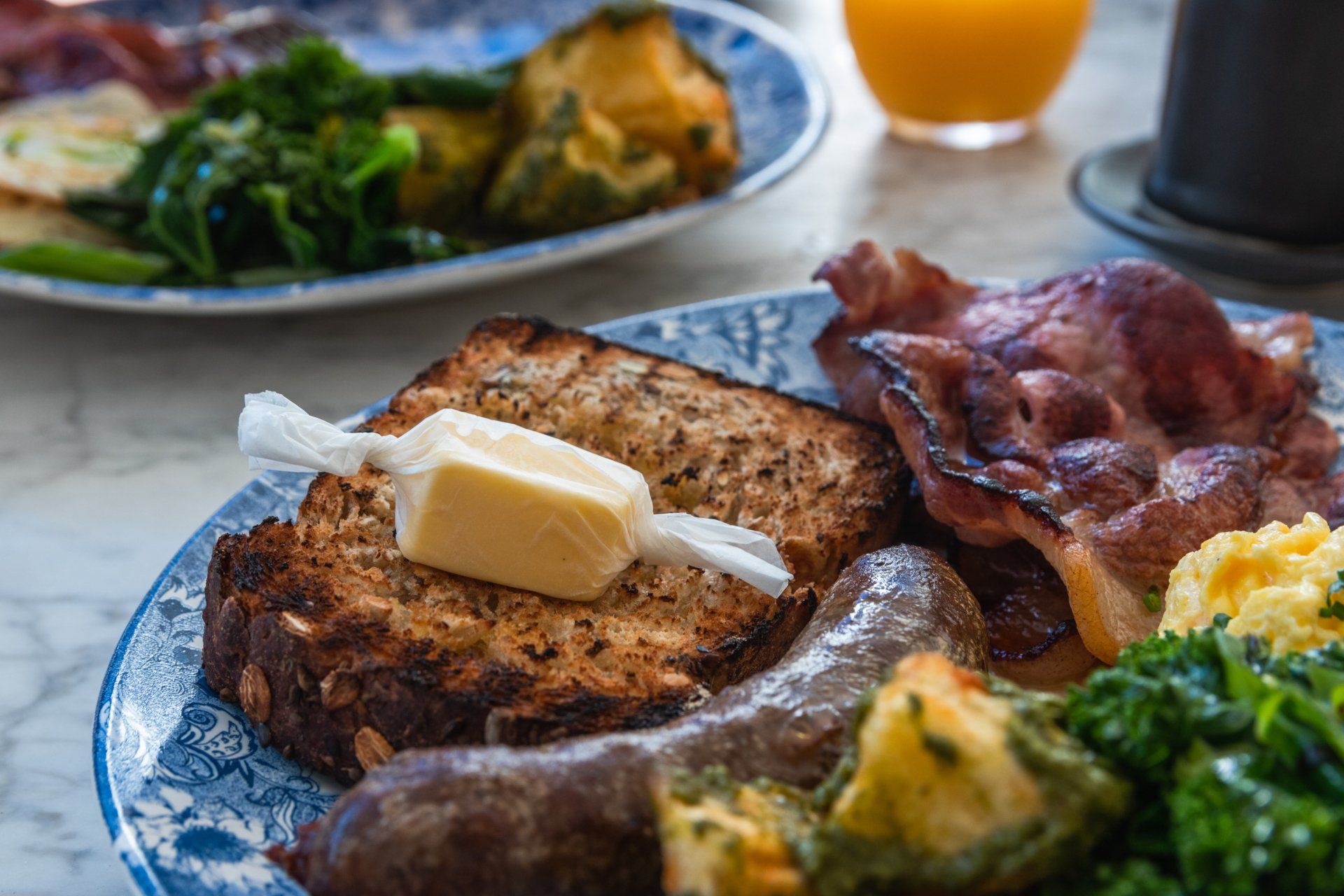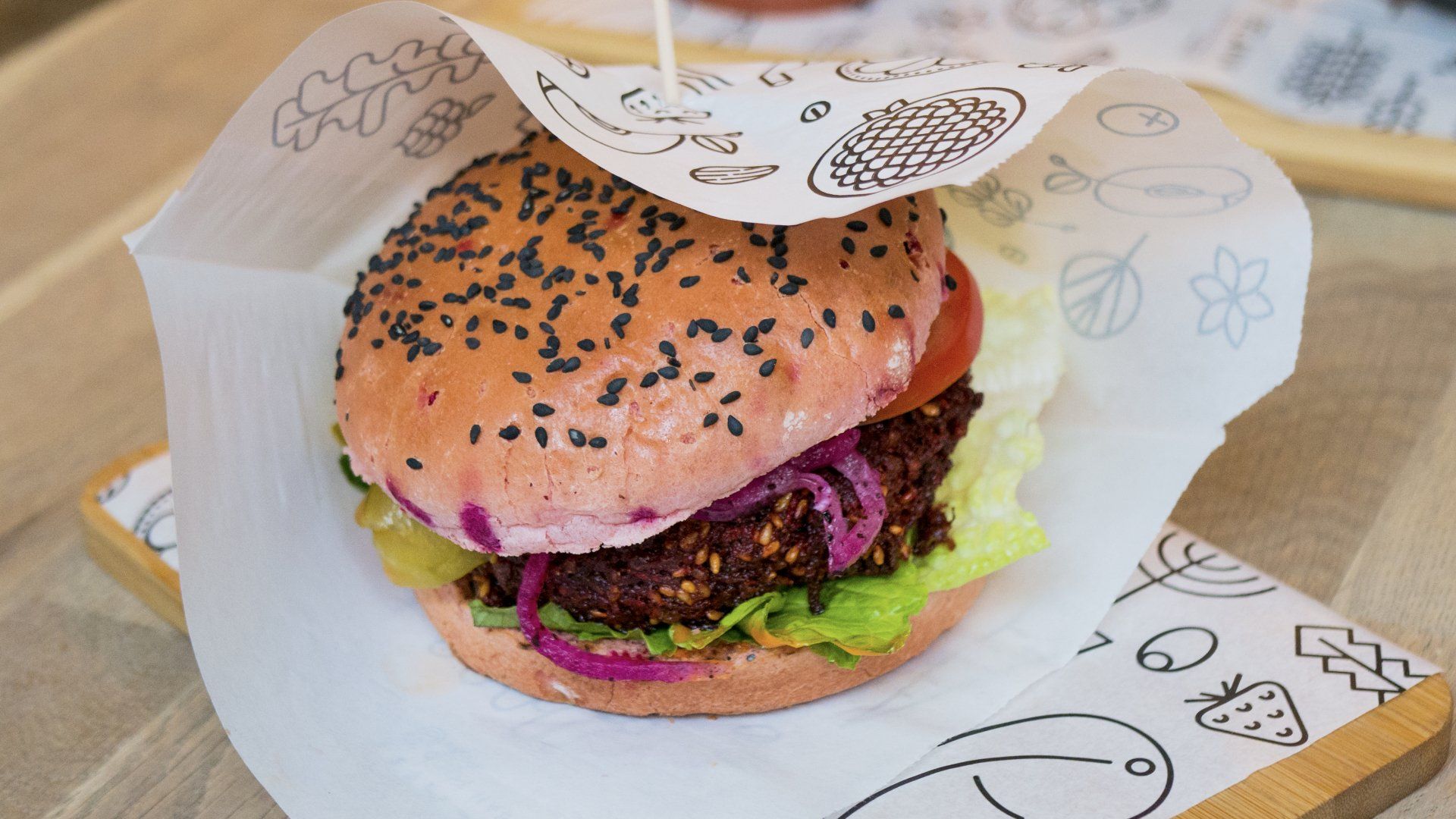

By Yunita Nisak
•
June 22, 2022
SHOULD YOU TRY THE KETOGENIC DIET? Doctors and researchers have investigated the potential benefits of ketogenic diets for decades. The ketogenic diet has also proven as a successful short-term effect on weight loss. So what is a ketogenic diet, and what does it impact our body? What is the ketogenic diet? The term " ketogenic diet " generally refers to a diet that is very low in carbohydrates, modest in protein, and high in fat. The dietary macronutrients are divided into approximately 55% to 60% fat, 30% to 35% protein, and 5% to 10% carbohydrates. Specifically, in a 2000 kcal per day diet, carbohydrates amount to 20 to 50 g/day. This mix of fuels aims to induce ketosis or the production of ketone bodies that serve as an alternate energy source for neurons and other cell types that cannot directly metabolize fatty acids. Urinary ketone levels are often used as an indicator of dietary adherence. Before you embark on the keto diet, it's essential to understand what does and doesn't count as keto diet foods and whether you're a good candidate for the diet. The keto diet may be particularly helpful for people who need to lose weight or get their blood sugar under control — especially if they've tried and failed other diets or eating styles due to hunger. So what exactly can you eat on a ketogenic diet? Here's what you should know. What foods are allowed? The biggest question most people have about the keto diet: How does eating beef, pork, butter and cheese all day lead you to lose weight? The keto diet is about changing the way your body processes food, which means consuming more fat and fewer carbs than the average person. Those who follow the ketogenic diet feel that it drastically reduces their appetite, making it easier to stick with the calorie restriction that promotes weight loss. Fig 1. Ketogenic diet pyramid Following a ketogenic diet, you should eat more fat and protein while reducing carbohydrate consumption. According to Fig 1 , we can see that beer is not allowed in the ketogenic diet. Regular beer, cocktails and mixed drinks are often high in carbs. Total carbohydrate content of lager and ale beers range between 10–30 and 15–60 g/l, respectively. which may take your body out of ketosis and is not adequate for your diet. Wine and vodka can be good options if you want to drink alcoholic beverages. Wine is much lower in carbs than beer, whiskey, and vodka contains zero carbs . Fruits offer essential nutrients, such as vitamins and minerals, which are an important part of a person's diet. But if you are following a ketogenic diet, avoid eating large quantities of fruit to achieve or maintain ketosis. Most fruit has too much sugar for keto. Guava, banana and mangoes are equally high in carbohydrates. According to USDA , a Banana contains 22.8 grams of carbohydrates in each serving. But don't worry, there are other options to substitute your daily fruit needed. Whereas most fruits primarily contain carbs, avocados are high in fats. Avocados are about 66.2% fat by calories, making them even higher in fat than most animal foods. What is the health effect of a ketogenic diet? The ketogenic diet has some health benefits for our body; It significantly reduces the body weight and body mass index of the patients. Furthermore, it decreased the level of triglycerides, LDL cholesterol and blood glucose and increased the level of HDL cholesterol. The evidence also suggests that eating a high-fat diet improves lipid profiles by lowering low-density lipoprotein (LDL), increasing high-density lipoprotein (HDL), and lowering triglycerides (TG). According to research , people on a ketogenic diet initially experience rapid weight loss, up to 10 lbs in 2 weeks or less. Is the ketogenic diet safe? According to research published at PubMed.gov , ketogenic diet does not appear to have significant safety concerns for the general public. It can be considered a first-line approach for obesity and diabetes. Chronic ketosis might confer unique metabolic benefits relevant to cancer, neurodegenerative conditions, and other diseases associated with insulin resistance. Based on available evidence, a well-formulated What is the side effect of the ketogenic diet? Very-low-carbohydrate diets may lack vitamins , minerals, fibre, and phytochemicals found in fruits, vegetables, and whole grains. Low-carbohydrate diets are often low in thiamin, folate, vitamin A, vitamin E, vitamin B6, calcium, magnesium, iron, and potassium. For adults following the ketogenic diet, the most common complications include nutrient deficiency , weight loss, constipation and increased cholesterol levels. Women may also experience amenorrhea or other disruptions to the menstrual cycle. The most common and relatively minor short-term side effects of the ketogenic diet include a collection of symptoms like nausea, vomiting, headache, fatigue, dizziness, insomnia, difficulty in exercise tolerance, and constipation, sometimes referred to as keto flu. The short-term effects (up to 2 years) of the ketogenic diet are well reported and established. However, the long-term health implications are not well known due to limited literature.

By Yunita Nisak
•
June 22, 2022
PLANT-BASED MEAT. IS IT HEALTHY? 49.1% of adults in the United States aimed to lose weight from 2013-to 2016, according to a survey by CDC. The question is: which diet is to lose weight and get healthy? When considering foods that help you lose weight, science now tells us a plant-based diet works best for weight loss compared to other diets. In recent years, there has been a steady increase in awareness and popularity of plant-based diets. In a survey of around 11,000 Americans, the organization found that 84% of vegetarians and vegans return to eating meat. Avoiding beef consumption is difficult since meat has a delicious taste with the flavors and texture, which is not available in simple plant-based food. If you think Meatloaf is just a giant beef burger shaped like a loaf, it's time to abandon that misconception. Meatloaf has tender and juicy on the inside with a sweet and tangy topping. Here is the recipe for my favorite meatloaf; this is very easy and won't take too long to make! MEATLOAF RECIPE WITH THE BEST GLAZE Vegan Meatloaf is a delicious and healthy vegan version of Meatloaf. It gets a hearty texture from a mixture of lentils and walnuts, so it's loaded with plant-based protein and plenty of filling fiber. This vegan lentil meatloaf will be the best for your dinner, paired with mashed potatoes and steamed green beans and topped with a sweet and tangy balsamic ketchup sauce. Fig 1. Vegan meatloaf The Ingredients (for eight slices) Lentil loaf - 3 cups cooked lentils (green or brown) - 1/2 cup quinoa (already cooked) - 1/2 cup quick-cooking oats (certified gluten-free, if needed) - 1/2 cup chopped walnuts - 2 tbsp ground flax seeds+6 tbsp water - 2 tbsp olive oil - 1 large onion, chopped - 4 garlic cloves, chopped - 1 large carrot, chopped - 1/8 teaspoon ground cayenne pepper (optional) - 1/2 tsp salt - 1 tsp pepper - 2 tsp paprika - 1 tsp dried oregano - 1 tsp dried parsley - 1/4 cup red wine - 2 tbsp tomato paste - 2 tbsp ketchup - 1 tbsp tamari (gluten-free soy sauce) Glaze - 2 tablespoons tomato paste - 1 tablespoon balsamic vinegar (or apple cider vinegar) - 2 tablespoons maple syrup - 1/8 teaspoon salt Directions Prepare lentils: Rinse the lentils, and remove odd pieces. Add 2 1/2 cups of water/broth with lentils in a large pot. Bring to a boil, reduce heat, cover and simmer for about 35 – 40 minutes, stirring occasionally. It's ok if they get mushy; we will puree 3/4 of the mixture when cooled roughly. Once done, remove the lid and set it aside to cool (there should only be a little bit of water, so do not drain); lentils will thicken a bit upon standing; about 15 minutes is good. Preheat oven: Preheat the oven to 375ºF and line a 9-inch by 5-inch loaf pan with parchment paper. You can use a spray oil so that the parchment paper will not stick in place Make flax egg: In a small bowl, combine flaxseed meal and 1/3 cup water, set aside for at least 10 minutes, preferably in the refrigerator. This will act as a binder and will thicken nicely upon sitting. Sauté vegetables & spices: In sauté pan over medium heat, add the olive oil and then sauté garlic, onion, bell pepper, carrots and celery for about 5 minutes. Stir until softened, add spices mixing well to incorporate, and then Set aside to cool. Mash the lentils: In a bowl of a large food processor fitted with an "S" blade, combine the cooked lentils, oats, walnuts, flax, tamari, thyme, and cayenne, salt, and several grinds of black pepper. When the vegetables are tender, add them in, too. When pressing it between your fingers, pulse several times until the mixture starts to stick together. You don't want it smooth for the best texture. Assemble lentil loaf: Combine sauteed vegetables with the lentils, oats, oat flour and flax egg; mix well. Taste, add salt and pepper as needed, or any other herb or spice you like. Place mixture into a loaf pan lined with parchment paper, leaving it overlapping for easy removal later. Press down firmly, filling in along the edges too. Glaze: Prepare your glaze by combining all ingredients in a small bowl, and mix until incorporated. Stir the glaze ingredients together and brush it over the top of the loaf. Bake uncovered at 375ºF for 30 minutes. Bake: Place in the centre of the oven, and bake in the oven for about 375ºF for 30 minutes. Let cool a bit before slicing. Let the loaf cool in the pan for at least 10 minutes, then use the parchment paper to lift it out of the pan easily. Slice and serve warm Serves: Then you can enjoy your vegan Meatloaf. Save the Leftover slices in an airtight container in the fridge for up to 3 days. Still, the leftover loaf will be a little drier in texture when you reheat it, so you might want to serve it with gravy for added moisture. WHY SHOULD YOU MAKE THIS VEGAN MEATLOAF AT HOME? A vegan meatloaf is packed with so much flavour because it's a compendium of all these other additions — the starch element, often the vegetable element, and indeed the meat element. Lentils, as the main ingredients in this vegan Meatloaf, offer numerous health benefits such as antioxidant, antidiabetic, anti-obesity, anti-hyperlipidemic, anti-inflammatory and anti-cancer properties. A study observed that whole-grain quinoa has a good protein source and a higher satiating efficiency index than cereals and white bread, which contain processed carbohydrates. Eating plant-based is a proven way to lose weight and keep it off. As we know, animal foods contain bad fats and cholesterol, which can affect people of any weight and are unsuitable for health. Still, by implementing a plant-based diet, you can balance the intake of macronutrients while having an ideal body weight. People who adopt a plant-based diet indeed adopt a healthier lifestyle. They tend to be happier and have a higher income and education because the gamma-aminobutyric acid (GABA) that rapidly accumulates in plant tissues has a brain relaxant effect. It helps reduce psychological and physical fatigue, improves task-solving ability, and produces a calming effect.








